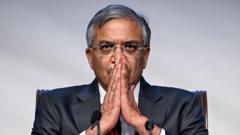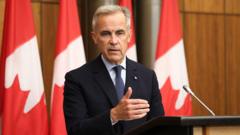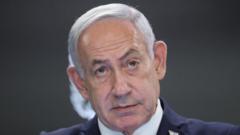Following a tense period of shelling and aerial operations, India and Pakistan have successfully initiated a ceasefire, with military leaders from both nations slated to converse about its stipulations. The fragile peace comes after extensive confrontations spurred by longstanding regional disputes, particularly over Kashmir, prompting the international community, including the US, to intervene.
Ceasefire Between India and Pakistan Holds as Military Officials Prepare for Discussions

Ceasefire Between India and Pakistan Holds as Military Officials Prepare for Discussions
Top military officials from India and Pakistan are set to discuss the recent ceasefire agreement, reflecting a fragile but crucial pause in hostilities between the two nuclear-armed neighbors.
Both India and Pakistan have officially ceased hostilities since the announcement of a ceasefire brokered by the US, which came over the weekend. Military officials from both nations are expected to hold discussions on Monday regarding the terms and conditions of this agreement, while remaining cautious and assertive in their respective territories.
The ceasefire was announced amidst heightened tensions that had erupted into several days of serious conflict, marked by intense shelling and incursions leading to casualties on both sides. President Donald Trump acknowledged the situation, asserting the importance of halting acts of aggression that were threatening significant loss of life and further escalation.
In the wake of the ceasefire, India has taken the step of reopening 32 civil airports that had been closed due to safety concerns. Both countries have cited military victories despite the ongoing ceasefire, pointing to various strikes and claimed gains over the last week. The violence stemmed partly from a militant attack in Indian-administered Kashmir that resulted in the deaths of 26 individuals, a tragedy for which India implicated a Pakistan-based group, a claim Islamabad has denied.
Throughout the recent clashes, India and Pakistan exchanged accusations of airspace violations and damage to military installations, with both sides reporting losses in personnel and equipment. As these military leaders prepare for discussions, the situation remains precarious, underscoring the need for both sides to commit sincerely to the ceasefire if peace is to endure amid their historically contentious relationship over the Kashmir region.
The ceasefire was announced amidst heightened tensions that had erupted into several days of serious conflict, marked by intense shelling and incursions leading to casualties on both sides. President Donald Trump acknowledged the situation, asserting the importance of halting acts of aggression that were threatening significant loss of life and further escalation.
In the wake of the ceasefire, India has taken the step of reopening 32 civil airports that had been closed due to safety concerns. Both countries have cited military victories despite the ongoing ceasefire, pointing to various strikes and claimed gains over the last week. The violence stemmed partly from a militant attack in Indian-administered Kashmir that resulted in the deaths of 26 individuals, a tragedy for which India implicated a Pakistan-based group, a claim Islamabad has denied.
Throughout the recent clashes, India and Pakistan exchanged accusations of airspace violations and damage to military installations, with both sides reporting losses in personnel and equipment. As these military leaders prepare for discussions, the situation remains precarious, underscoring the need for both sides to commit sincerely to the ceasefire if peace is to endure amid their historically contentious relationship over the Kashmir region.




















